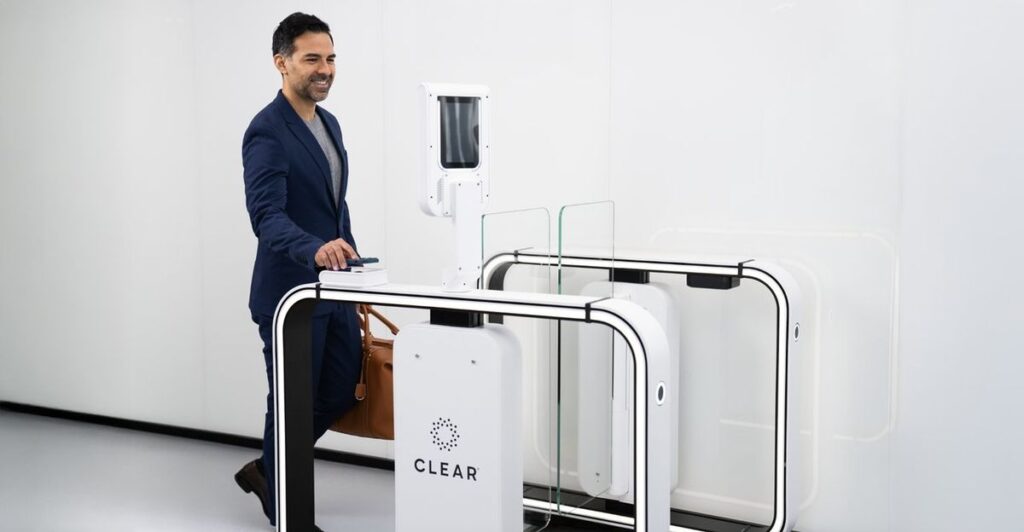
TSA is rolling out new technology to make security lines even faster.
The agency has partnered with biometrics company Clear to launch new e-gates that use facial recognition to verify travelers’ identities. Unlike other facial recognition products operated by the TSA, such as Touchless ID, the new lanes are completely automated and don’t require a human operator.
For now, the new gates are only available on an opt-in basis for Clear+ members. Memberships for the company’s expedited screening cost $209 per year and allow travelers to jump to the front of the security line—even ahead of the TSA PreCheck lane.
With the new technology, Clear+ members can scan their boarding pass when they enter the Clear+ security lane, walk straight up to an e-gate and verify their identity with their face, and proceed directly into the screening area.
Clear says the new technology is part of a larger effort to make airports more efficient and secure ahead of 2026, which is set to be a blockbuster year for travel in the United States, with events like the FIFA World Cup. More than 20 million international visitors are expected to visit the U.S. for the tournament, in addition to domestic travelers, meaning “checkpoint infrastructure will face unprecedented pressure,” according to Clear.
The e-gate pilot program has launched at Atlanta’s Hartsfield-Jackson Airport (ATL) and is expected to debut at two more airports by the end of August: Ronald Reagan National Airport (DCA) and Seattle-Tacoma International Airport (SEA). Clear says it plans to expand the facial recognition e-gates to its entire network of 59 U.S. airports, where it already operates expedited screening lanes.
Clear is running the pilot program under TSA supervision, meaning the trial isn’t being funded by American tax payers. Although Clear operates the e-gate technology, TSA is still conducting passenger identification and vetting, as well as triggering gate access for fliers. Clear will only have access to transmit limited data about fliers, including the live photo of passengers, their boarding pass, and the ID photo used for enrollment and identity information. It cannot access any watch lists, cannot override TSA decisions or manually open the gates.
The new e-gates “accomplish several objectives toward achieving Secretary Noem’s goal to enhance TSA security and hospitality,” said TSA Acting Deputy Administrator Adam Stahl. “This includes creating a seamless, less invasive traveler experience and shorter wait times at TSA security checkpoints.”
The e-gates are the latest in a litany of recent policy changes TSA has made in hopes of streamlining the screening process, including ending the shoes-off policy for travelers in the regular security line and launching new family lanes for TSA PreCheck members.
For the latest travel news, updates and deals, subscribe to the daily TravelPulse newsletter.

